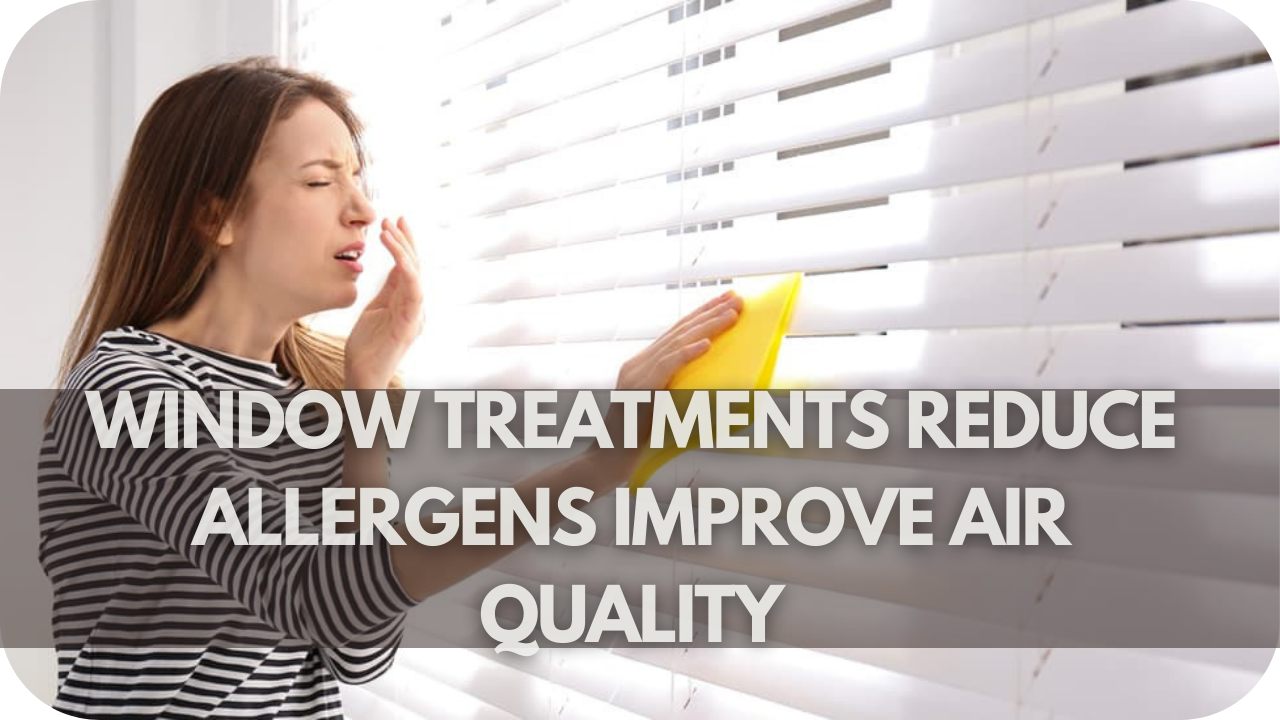A few months ago, I constantly battled sneezes and itchy eyes every morning. I hadn’t realised that my outdated window treatments were trapping dust and allergens.
After swapping them out for hypoallergenic options, the difference was immediate — my mornings felt more apparent, and my home became a sanctuary.
This journey taught me how the right window treatments can dramatically improve indoor air quality, especially for those with allergies. Let me share how you can achieve the same relief.
Key Features of Allergy-Friendly Window Treatments
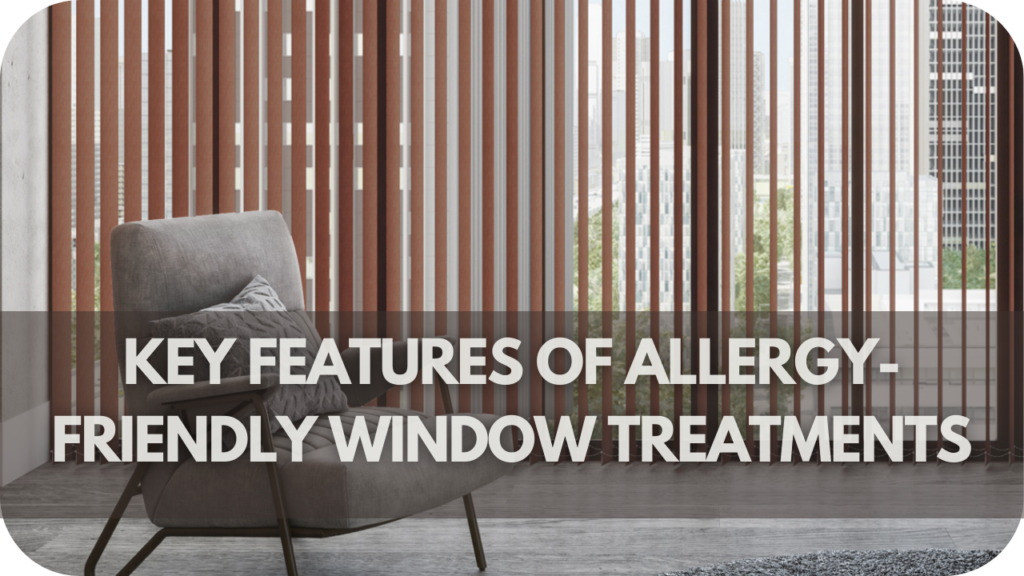
Opt for hypoallergenic materials, smooth surfaces, and minimal fabric to reduce dust accumulation. Look for antimicrobial and antifungal properties to enhance indoor air quality and make cleaning easier.
- Accessible to Clean Materials: Opt for materials that do not trap dust, such as smooth fabrics or synthetic materials that can be wiped clean easily.
- Anti-Allergen Treatments: Some windows are treated with anti-allergen solutions or finishes that repel dust mites, pet dander, and mould.
- Washable and Washable: Choose washable window treatments, such as curtains and blinds, that can be laundered to effectively remove allergens.
- Minimalist Design: Simple, streamlined designs with fewer folds and crevices reduce areas where dust and allergens can accumulate.
- Hypoallergenic Materials: Consider window treatments made from hypoallergenic materials like bamboo, vinyl, or certain types of polyester that resist allergen buildup.
- UV Resistance: Window treatments that resist fading and discolouration due to UV exposure maintain their integrity longer and are easier to clean.
Types of Window Treatments Ideal for Allergy Sufferers
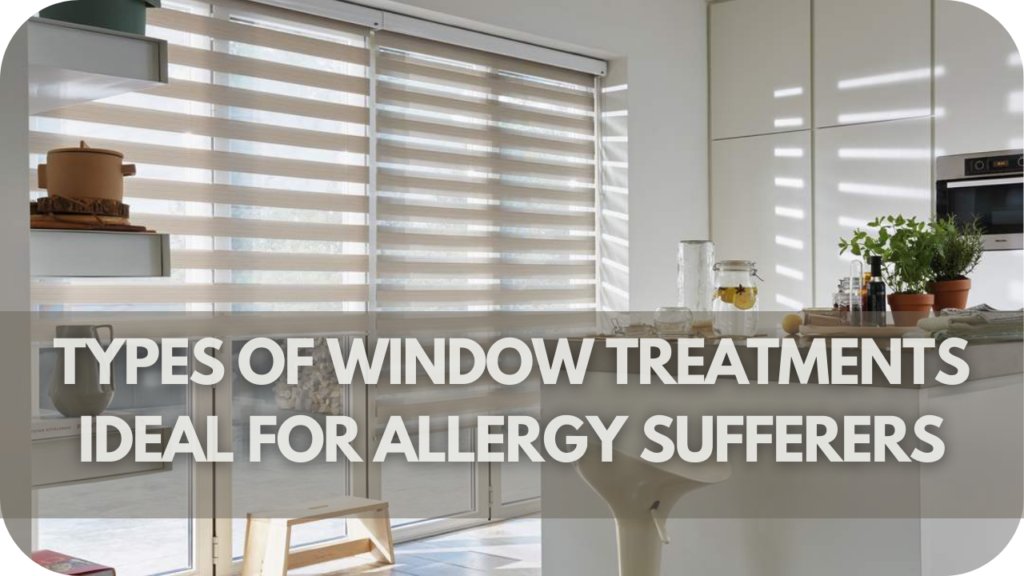
Discover the best window treatments for reducing allergens, including roller blinds, vertical blinds, shutters, and honeycomb shades. These options offer easy cleaning and minimal dust accumulation, enhancing indoor air quality for allergy sufferers.
1. Roller Blinds
Roller blinds are an excellent choice for allergy-conscious homeowners seeking simplicity and effectiveness in managing indoor air quality. Their smooth, streamlined design enhances the aesthetic appeal of any room and significantly reduces allergens.
Constructed from various materials, including polyester, cotton, and synthetic fabrics, roller blinds offer versatility in style and function. They can be easily cleaned with a vacuum cleaner fitted with a brush attachment or a damp cloth, effectively removing dust and allergens that accumulate on the surface.
The simplicity of roller blinds extends to their operation, typically featuring a cord or chain mechanism for easy adjustment of light and privacy levels. For enhanced allergen control, consider roller blinds treated with anti-static or anti-microbial coatings, which inhibit the growth of allergens like dust mites and mould.
2. Cellular Shades
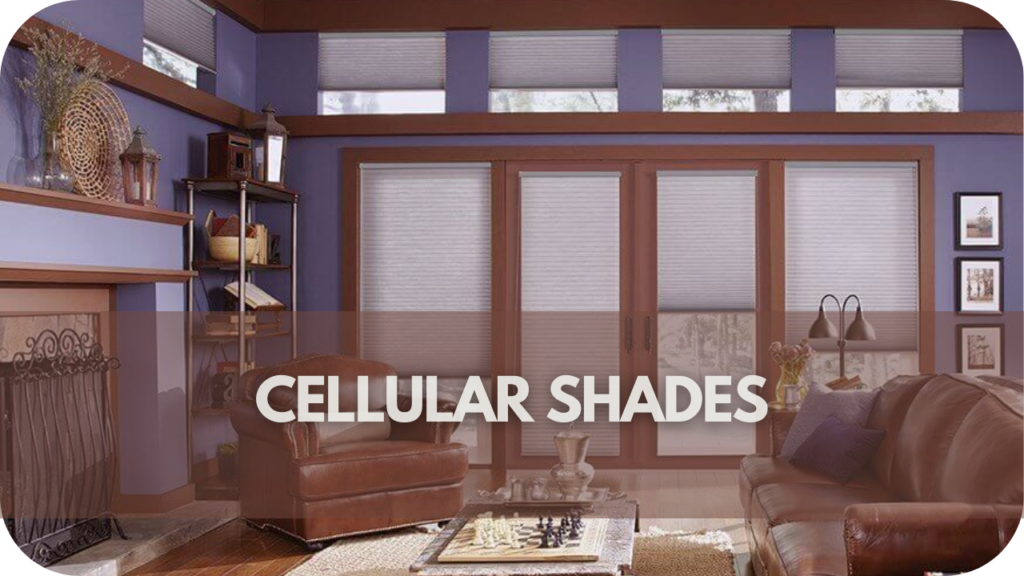
Cellular or honeycomb shades are a highly effective window treatment option for allergy-prone homes. They offer both style and functionality. These shades feature a unique honeycomb structure that traps air within the cells, providing insulation and sound absorption properties.
One critical benefit of cellular shades is their ability to reduce allergens. The trapped air within the cells acts as a buffer, preventing dust, pollen, and other allergens from entering the living space.
This feature helps maintain a cleaner indoor environment, promoting better air quality and reducing allergy symptoms. Cellular shades are available in various materials, including fabric, polyester, and eco-friendly options made from recycled materials.
They can be easily operated with cordless options for enhanced safety and convenience. Maintenance is straightforward, requiring occasional vacuuming or gentle wiping with a damp cloth to remove dust buildup.
3. Vertical Blinds
Unlike horizontal blinds, which can gather dust on each slat, vertical blinds are designed to allow less dust build-up due to their vertical orientation. This makes them easier to clean, as the dust tends to fall away rather than settle on the slats.
Opt for materials like PVC or faux wood, which can be wiped down regularly without needing heavy cleaning. Their easy-to-maintain nature makes them ideal for a functional and low-allergen window treatment.
4. Wooden or Faux Wood Blinds

Natural wood blinds, or their faux counterparts, offer a sleek and allergy-friendly alternative to fabric-based window treatments. Wood has natural antistatic properties, so it repels dust more effectively than other materials.
Faux wood, made from synthetic materials, has a similar appearance but is even more moisture—and dust-resistant. Both types can be easily wiped clean, reducing the chance of allergens building up.
5. Washable Curtains
Washable curtains are an excellent choice for allergy-prone homes, offering style and practicality. They are typically made from cotton, polyester, or microfiber that can withstand regular washing and effectively remove dust, pollen, and other allergens.
The critical advantage of washable curtains is that they can be laundered in a washing machine. This helps maintain indoor air quality by eliminating allergens that settle on fabric surfaces over time.
For optimal results, it’s recommended that they be washed at least once a month, mainly if they are located in high-traffic or dust-prone areas.
When choosing washable curtains, opt for fabrics that are easy to care for and resistant to shrinking or fading. Some curtains come with removable liners or are inherently stain-resistant, enhancing their durability and cleanliness.
6. Plantation Shutters
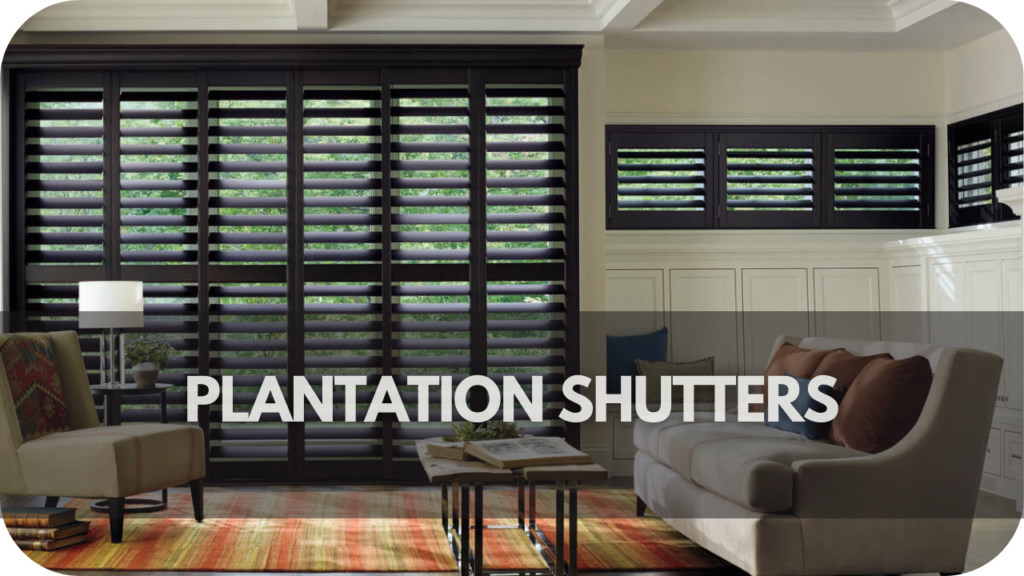
Plantation shutters, particularly those made from vinyl, composite wood, or faux wood, are a stylish and practical solution for reducing allergens. Their non-porous surfaces make them resistant to dust and can be quickly wiped down.
Shutters don’t have fabric to trap allergens, making them a superior option for homes with allergy sufferers. They are also allergy-friendly and offer excellent light control and insulation properties, making them an all-around winner.
Maintenance Tips to Reduce Allergens
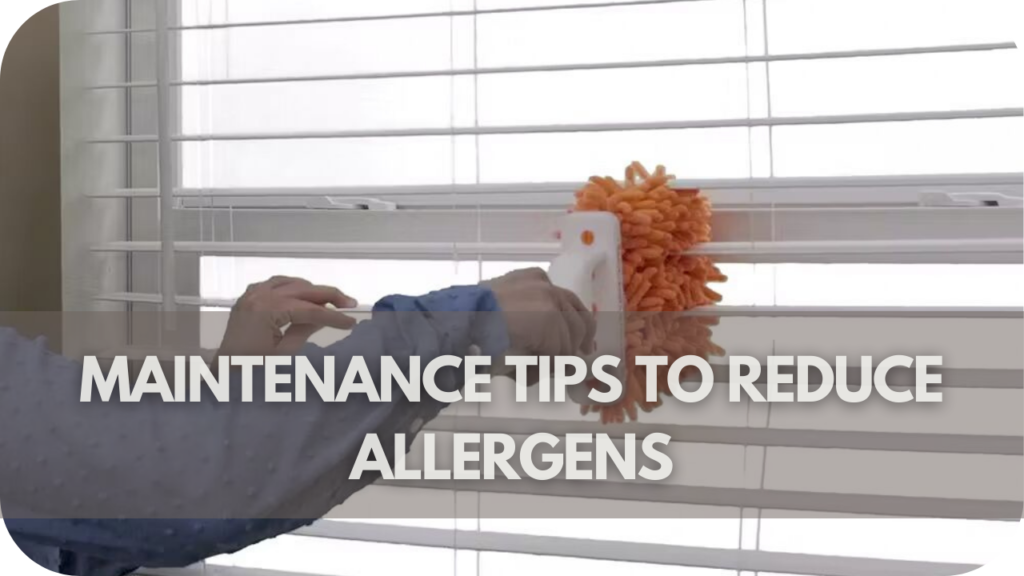
Maintaining clean window treatments is crucial for reducing allergens and improving indoor air quality in your home.
Regular vacuuming is essential; using a vacuum cleaner with a brush attachment to gently vacuum curtains, blinds, and shades removes dust, pet dander, and other allergens that settle on fabric and hard surfaces.
It is recommended that washable curtains and fabric blinds be laundered regularly, according to manufacturer instructions. Hot water effectively removes allergens, and thorough drying prevents mould growth.
Non-fabric treatments, such as vinyl blinds or shutters, should be wiped down regularly with a damp cloth to prevent dust buildup and keep allergens from circulating in the air.
Additionally, scheduling periodic deep cleaning for window treatments that are not washable can help effectively remove embedded allergens. Professional cleaning services or detailed DIY methods are suitable for this purpose.
It is also essential to inspect for signs of mould growth around window frames and on wooden blinds, addressing any mould promptly to prevent allergen exposure and maintain indoor air quality.
Additional Tips for Improving Indoor Air Quality
Enhancing indoor air quality goes beyond choosing the right window treatments. Here are additional tips to further reduce allergens and promote a healthier home environment:
- Air Purification Systems: Consider installing HEPA air purifiers to filter out fine particles and allergens from the air, especially in rooms where allergens tend to accumulate.
- Regular Dusting: Dust surfaces frequently with a damp cloth or electrostatic duster to prevent dust buildup and allergen dispersion.
- Use of Allergy-Proof Bedding: Opt for a hypoallergenic mattress and pillow covers to protect against dust mites, a typical indoor allergen.
- Maintain Optimal Humidity Levels: Use a dehumidifier in damp areas to control moisture levels and prevent mould growth, which can exacerbate allergies.
- Limit Indoor Plants: While plants can improve air quality, they can also harbour mould and pollen. Choose plants less likely to trigger allergies, and keep them well-maintained.
- Regular HVAC Maintenance: Change air filters regularly and schedule professional HVAC inspections to ensure efficient operation and cleaner indoor air.
Conclusion
Why let allergens control your home’s comfort when the right window treatments can change everything? Whether roller blinds or plantation shutters, reducing allergens has never been easier.
Ready to take action? At Into Blinds, Australia’s most trusted Supplier, we have a 30% off sale waiting for you. Don’t wait — breathe easier and improve your air quality today!

